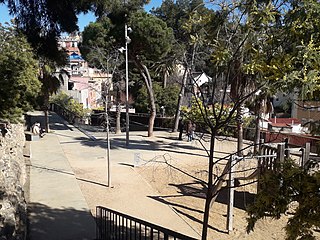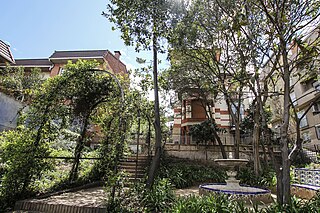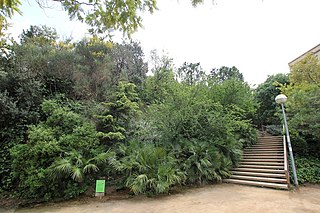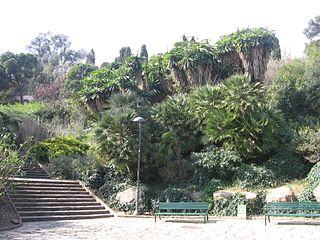Self-guided Sightseeing Tour #2 in Barcelona, Spain
Legend
Guided Free Walking Tours
Book free guided walking tours in Barcelona.
Guided Sightseeing Tours
Book guided sightseeing tours and activities in Barcelona.
Tour Facts
1.1 km
80 m
Experience Barcelona in Spain in a whole new way with our free self-guided sightseeing tour. This site not only offers you practical information and insider tips, but also a rich variety of activities and sights you shouldn't miss. Whether you love art and culture, want to explore historical sites or simply want to experience the vibrant atmosphere of a lively city - you'll find everything you need for your personal adventure here.
Activities in BarcelonaIndividual Sights in BarcelonaSight 1: Jardins de Maria Baldó
The Maria Baldó Gardens are a green space in the Barcelona neighbourhood of Vallcarca i els Penitents, which together with the Manuel Blancafort Gardens form part of the green corridor between Park Güell and the Turó del Putxet Gardens. They are dedicated to Maria Baldó, founder, in 1923, of the La Farigola school for girls, located in the same neighbourhood.
Sight 2: Jardí dels Arabescos
The Arabescos Garden is a garden space located just below the viaduct and next to the Vallcarca metro station.
Sight 3: Jardins de Portola
The Portolà Gardens, with an area of 626 m², are located in the streets of the same name and Claudi Sabadell in the Putxet district of Barcelona. Inaugurated in 2005, they belong to the modernist tower Vil·la Matilde, built around 1910 and listed as a cultural asset of local interest.
Sight 4: Jardins de Mercè Rodoreda
The Mercè Rodoreda Gardens are an urban park located between Avinguda de la República Argentina, Baixada de Blanes and Carrer de la Costa, in the neighbourhood of El Putget i Farró, in Barcelona. They were inaugurated in 2008 to commemorate the centenary of the birth of the writer Mercè Rodoreda. Located on a steep slope, between the hill of El Puget and the Vallcarca stream, the gardens contain typically Mediterranean species such as holm oaks, stone pines, ivory, palm trees, almond trees, among other ornamental species such as cedars, mimosas and palm trees.
Sight 5: Parc del Turó del Putxet
The Turó del Putxet Gardens are located on the hill of the same name, in the neighbourhood of El Putxet i el Farró in Barcelona. It is considered one of the seven hills of Barcelona, a figure taken in imitation of the seven hills of Rome.
Share
How likely are you to recommend us?
Disclaimer Please be aware of your surroundings and do not enter private property. We are not liable for any damages that occur during the tours.
GPX-Download For navigation apps and GPS devices you can download the tour as a GPX file.




